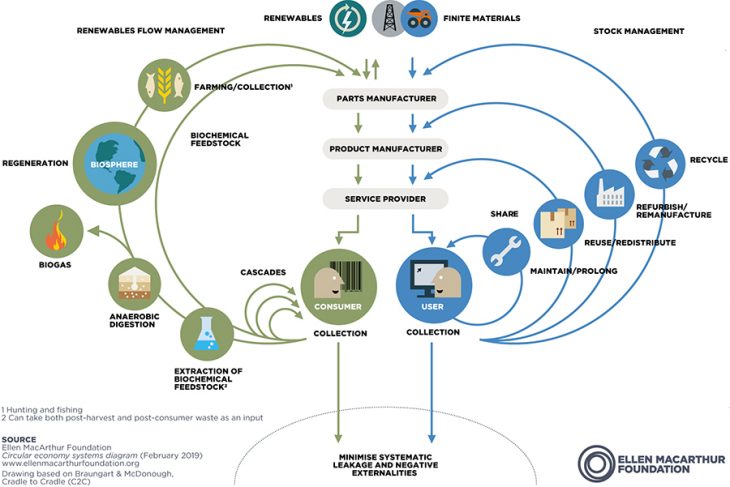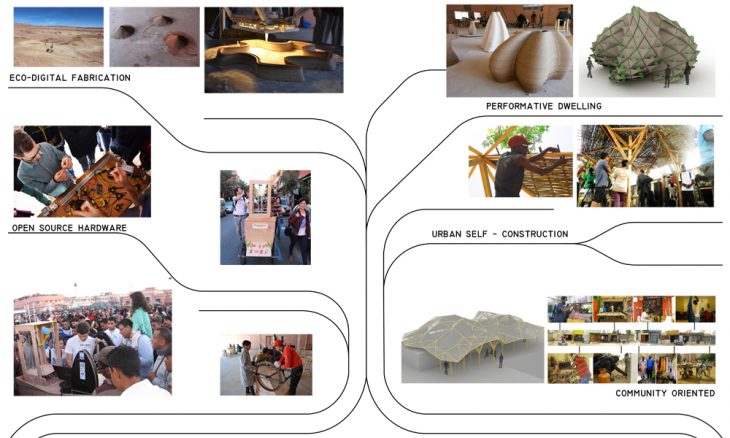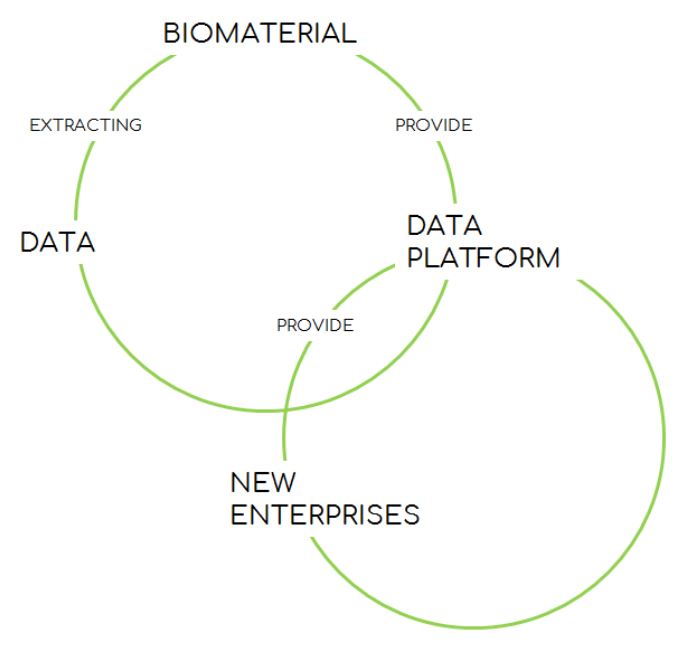Two Sides of Circular Design
There is no doubt that the world is facing a huge climate crisis right today and for the next coming years. Cities all over the world are now thinking of ways on how to combat this battle and circular design (C.D.) is the pioneering approach that is continuously being examined and tested.

Circular Design diagram (Circular Design,
https://www.ellenmacarthurfoundation.org/explore/circular-design
)
As the heart of circular economy, circular design as an alternative strategy aims to move away from the ‘take, make, dispose’ model and focus on reducing waste by extending the life cycle of materials and allowing it to have multiple purposes and users. Aside from this, it also has two levels of focus, one is for the physical layer and second is the digital layer.
It is a fact that cities are known as the biggest consumers earth’s natural resources and producers of linear wastes. From the tallest skyscrapers to the high dependency on concrete as a construction material, the circular design’s role in elevating these problems is important as it addresses critical points of the climate crisis. For example, it is made to optimize material selection by critically analyzing its characteristics thus, choosing which has the least impact on the environment.
In addition, what makes circular design different from others is its strong relationship with technology. Building Information Modelling (BIM), a good example of digital technology, has the capability to let the designers foresee possible scenarios in building construction thus avoiding, if not- minimizing negative impacts and wastes that are typically bound to happen in traditional methods. Through this, a culture of collaboration around new business models for circular construction is also developed.
The discovery of Big Data acquired through a series of Internet of Things (IoT) became a pivotal point in the development of circular design. Information such as number of users within a certain place, condition of the quality of air, material life cycle, and real-time data, can be used by policy makers, urban planners, designers, or anyone who is interested in providing better solutions to the world. Thus, these tools together with the physical layer of circular design contributes in having a better circular decision-making process in design and construction.
This unique design approach is further visualized into five circular business models: circular supply chain, recovery and recycling, product life extension, sharing platform, product as a service which will be further discussed in the next section.
The aim of this response is to prove that circular design is on its way to transform how cities should work through selected projects within the physical and digital context of it. These works also based on the five circular business models will provide a more detailed point of view of the concept of the circular design.
CODESIGNLAB, an architectural firm and a design research laboratory for performative architecture and smart constructions, is a pioneering example in following the principle of circular design (physical layer).
Their work focuses on microarchitectures to serve native communities, educational programs for artisans to build their own off-grid printers, and fab-labs in a neighbourhood of artisans.

African Fabbers School Framework (african fabbers school,
http://codesignlab.org/fr/90-homepage/260-african-fabbers-school.html
)
One of their responsive works is the African Fabbers School [AFS] project, a part of the African Fabbers Project (AFP), that uses recovery and recycling circular business model. It is the first school of urban ecologies, self-construction and digital fabrication in Africa.
“AFS is an educational program designed to generate small businesses and imagine new circular economies.” (african fabbers school,
http://codesignlab.org/fr/90-homepage/260-african-fabbers-school.html
)
Often depicted by the media as just an object for humanitarian aid, AFS aims to change this perception by responding to the lack of design schools in the region in order to investigate the growth of African cities through circular design.
Developed by Atelier Paolo Cascone in collaboration with the local community, AFS is the first school of urban ecologies, digital fabrication and self-construction in ?frica. It is a new model of circular economy that focused on high-tech design yet low-tech construction strategy. This was shaped by the team through exploring off-grid housing scalable solutions and bridging vernacular architecture with more technological solutions inspired by Jean Prouve’s tropical house.
One of their products, the Earth Playground, with the idea of hydroponic system as the core of their design, used techniques such as 3D printing for the structural components and fabrication of interlocked ceramic elements made by local clay. Through proper tools and selection of the right materials, the project was able to produce something meaningful and impactful to the environment positively.
The impact of AFS also extends from its physical boundaries as it benefits the citizens of African economies in generating knowledge and skills which could be used in starting their own businesses. At the same time, provided a network of local and international industries able to design and make high and low tech sustainable solutions in the field of urban design and building constructions in Africa. (african fabbers school,
http://codesignlab.org/fr/90-homepage/260-african-fabbers-school.html
)
“AFS considers production as a tool for anthropological investigation, as a practice able to keep together disadvantaged social fabrics making a virtue out of necessity.” (african fabbers school,
http://codesignlab.org/fr/90-homepage/260-african-fabbers-school.html
)
This project as an example of physical layer of circular design reflects the advantages it has not only to the space itself, but also to the environment and its users. It fosters possibilities and connections within the urban context of Africa.
In terms of circular economy, the question to be asked is: How can companies develop and increase their production capacity with the same existing physical resources?
This translates into a major impact on cities and means a challenge for industries that want to introduce the circular economy into their mode of operation, because the populations mostly located in the cities are increasingly demanding and growing. That is why this second part of the analysis introduces the digital level and its importance for the circular economy.
The digital world is very wide and affects cities and their users at different levels. Its biggest advantage is that it is an infinite resource, so it can be available without relying on any factor or resource from the environment.
The digital level increasingly implies the “dematerialization” of the physical world, this being a complement or in many cases its replacement (for example, paper newspapers vs. digital newspapers). It could be said that on many levels the digital world is the answer to the previous question.
To better explain these concepts, we analyzed the Metabolic project by Elizabeth Corbin where it is understood very clearly how the digital world becomes key to the operation of circular economy projects.

Diagram of Metabolic platform
Metabolic is made up of an international group of researchers in different areas (engineers, designers and environmentalists) who work together to generate an open source platform for sharing recipes of biomaterials made from locally resources. The project involves a digital process that can be analyzed from two perspectives:
First is the extraction and analysis of data. In order to obtain these biomaterials, a previous study of the availability of existing natural resources and their distribution in the world was necessary.
To understand its importance, let’s think of a scenario in which there is no user data or distribution of a material in the world, what happens is that probably very good ideas remain unfinished because they are unreal in terms of expansion or logistically not efficient. Therefore, thanks to the previous analysis of data, the generation of a product in the physical world becomes increasingly globalized, close and adapted to reality.
The second level of this project is the database that it generates as a final product, not physical but digital. This opens a big door to the decentralization of large industries and the more equitable flow of resources through local production. Metabolic also functions as a platform to promote open protocols to test and share material data.
Metabolic opened a door to the decentralization of large industries and to more equitable flow of resources through local production. It also demonstrates how open data from a platform feeds future ventures in which specifically biomaterials and all data that provides its production will be used in an increasingly optimal and assertive way. In addition, local production is directly related to the reduction of the negative impact of mass industrialization on the environment and the way in which cities currently operate.
The two works discussed in this response amplifies the potential role of circular design in shaping the future of our cities. From the physical applications to digital platforms, the tools used are a living proof that this strategy is no longer remains a vision but a living possibility.
“There is no doubt in my mind that the circular economy will come. It is important for us to drive development in this area to ensure that we understand what kind of solutions we can provide, once clients realise that this is the new paradigm.”
— John Sommer
Director of Strategy and
Business Development
MT Højgaard Group
Although there are quite a handful of challenges circular design has to face before unleashing its full potential, the opportunities are will remain. What makes this approach powerful is not just about the goal of saving the world but also teaching the humans how to thrive on it.
Circular design takes into consideration people, planet and profit. It is embedded as a core strategy in restoring and saving the world from irreversible damage.
References:
- Circular design. (n.d.). Retrieved from
https://www.ellenmacarthurfoundation.org/explore/circular-design
. - Circular Design – Circular Design English. (n.d.). Retrieved from
http://www.circular-design.eu/automatisch/
. - Using digital tech to spin the circular economy. (n.d.). Retrieved from
https://www.accenture.com/be-en/insight-outlook-using-digital-tech-spin
. - The first digital manufacturing laboratory for architecture and design in Africa. (n.d.). Retrieved from
https://www.domusweb.it/en/design/2018/12/26/the-first-digital-manufacturing-laboratory-for-architecture-and-design-in-africa.html
. - Cascone, P. (n.d.). african fabbers school. Retrieved from
http://codesignlab.org/fr/90-homepage/260-african-fabbers-school.html
. - Using digital tech to spin the circular economy. (n.d.). Retrieved from
https://www.accenture.com/be-en/insight-outlook-using-digital-tech-spin
. - Home. (n.d.). Retrieved from
https://materiom.org/
. - Conférence inaugurale – Liz Corbin. (n.d.). Retrieved from .
Two Sides of Circular Design is a critical reflection paper developed at IaaC, Institute for Advanced Architecture of Catalonia at Master in City & Technology in (2019/2020) by:
Students: Rashid Gilfanov, Jianne Libunao, Michelle Carolina Rodriguez Ruiz
Faculties: Mathilde Marengo